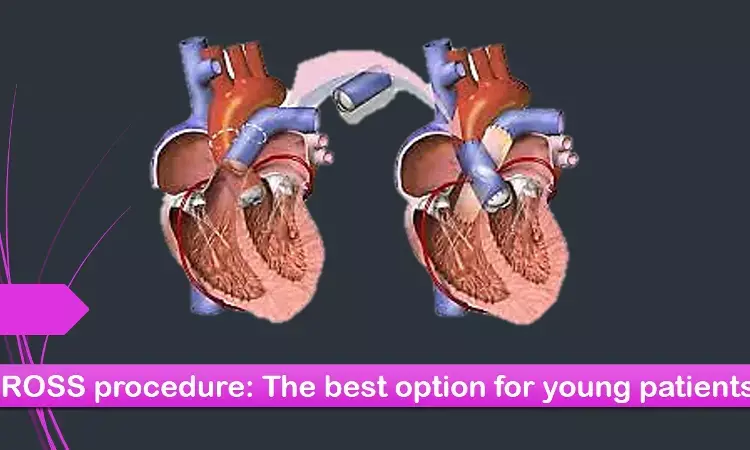- Home
- Medical news & Guidelines
- Anesthesiology
- Cardiology and CTVS
- Critical Care
- Dentistry
- Dermatology
- Diabetes and Endocrinology
- ENT
- Gastroenterology
- Medicine
- Nephrology
- Neurology
- Obstretics-Gynaecology
- Oncology
- Ophthalmology
- Orthopaedics
- Pediatrics-Neonatology
- Psychiatry
- Pulmonology
- Radiology
- Surgery
- Urology
- Laboratory Medicine
- Diet
- Nursing
- Paramedical
- Physiotherapy
- Health news
- Fact Check
- Bone Health Fact Check
- Brain Health Fact Check
- Cancer Related Fact Check
- Child Care Fact Check
- Dental and oral health fact check
- Diabetes and metabolic health fact check
- Diet and Nutrition Fact Check
- Eye and ENT Care Fact Check
- Fitness fact check
- Gut health fact check
- Heart health fact check
- Kidney health fact check
- Medical education fact check
- Men's health fact check
- Respiratory fact check
- Skin and hair care fact check
- Vaccine and Immunization fact check
- Women's health fact check
- AYUSH
- State News
- Andaman and Nicobar Islands
- Andhra Pradesh
- Arunachal Pradesh
- Assam
- Bihar
- Chandigarh
- Chattisgarh
- Dadra and Nagar Haveli
- Daman and Diu
- Delhi
- Goa
- Gujarat
- Haryana
- Himachal Pradesh
- Jammu & Kashmir
- Jharkhand
- Karnataka
- Kerala
- Ladakh
- Lakshadweep
- Madhya Pradesh
- Maharashtra
- Manipur
- Meghalaya
- Mizoram
- Nagaland
- Odisha
- Puducherry
- Punjab
- Rajasthan
- Sikkim
- Tamil Nadu
- Telangana
- Tripura
- Uttar Pradesh
- Uttrakhand
- West Bengal
- Medical Education
- Industry
AVR in young: Is Ross procedure the perfect answer? Study reports excellent outcomes

JAMA Cardiology: There is no perfect prosthetic valve substitute for young and middle-aged patients requiring aortic valve replacement (AVR). The long-term risks of anticoagulation with a mechanical prosthesis must be weighed against the risks of structural valve deterioration of a bioprosthetic valve. In patients aged 20 to 40 years, the decision almost always leads to the selection of a mechanical valve and lifelong anticoagulation. Against this background, Romeo et al have now reported robust survival rates post-Ross procedure in long-term with very low rates of reoperation for either aortic autograft or pulmonary homograft failure and excellent hemodynamics.
To determine the long-term clinical and echocardiographic outcomes in young and middle-aged patients (18-65 years) undergoing the Ross procedure, a retrospective multicenter international cohort study with a median follow-up period of 9.2 years was conducted in 5 experienced centers regularly performing the Ross procedure.
Implantation techniques were root inclusion in 24.9%, root replacement in 485 34.0%, and subcoronary implantation 41.1%. Right ventricular outflow tract reconstruction was performed with homografts in 98.6% and bioprostheses in 1.4%.
In this cohort study including 1431 adult patients undergoing the Ross procedure, survival at 10 and 15 years was 95.1% and 88.5%, respectively. Reintervention on either the homograft or autograft 15 years after surgery was uncommon, valve-related events were rare, and valve function was excellent as determined by echocardiography.
For several decades, the Ross procedure—a double-valve operation using the patient's own pulmonic valve as an autograft to replace the aortic valve and a pulmonary homograft to reconstruct the continuity of right ventricular outflow tract and pulmonary artery—has offered a potential but infrequently performed solution to AVR in young patients.
The excellent autograft hemodynamics without need for long-term anticoagulation have translated into improved long-term outcomes with the Ross procedure compared with AVR with mechanical prostheses or aortic homografts. However, these benefits are offset by its technical complexity and longer operative times, as well as the potential for long-term degeneration of the aortic autograft, the pulmonic homograft, or both.
There is limited discussion of the Ross procedure in the revised American College of Cardiology/American Heart Association guidelines, in which it has received a class IIb recommendation (level of evidence, B) for patients younger than 50 years when performed only at a comprehensive valve center by surgeons experienced in this procedure.
These results are noteworthy and indicate what can be achieved by excellent surgeons in centers devoted to this procedure in patients who are appropriately selected. However, this experience may not be generalizable beyond this small network of specialized centers, because it is unlikely that these results currently could be replicated more broadly in other academic institutions and community hospitals.
Source: JAMA cardiology: doi:10.1001/jamacardio.2020.7434
MBBS, MD , DM Cardiology
Dr Abhimanyu Uppal completed his M. B. B. S and M. D. in internal medicine from the SMS Medical College in Jaipur. He got selected for D. M. Cardiology course in the prestigious G. B. Pant Institute, New Delhi in 2017. After completing his D. M. Degree he continues to work as Post DM senior resident in G. B. pant hospital. He is actively involved in various research activities of the department and has assisted and performed a multitude of cardiac procedures under the guidance of esteemed faculty of this Institute. He can be contacted at editorial@medicaldialogues.in.
Dr Kamal Kant Kohli-MBBS, DTCD- a chest specialist with more than 30 years of practice and a flair for writing clinical articles, Dr Kamal Kant Kohli joined Medical Dialogues as a Chief Editor of Medical News. Besides writing articles, as an editor, he proofreads and verifies all the medical content published on Medical Dialogues including those coming from journals, studies,medical conferences,guidelines etc. Email: drkohli@medicaldialogues.in. Contact no. 011-43720751


